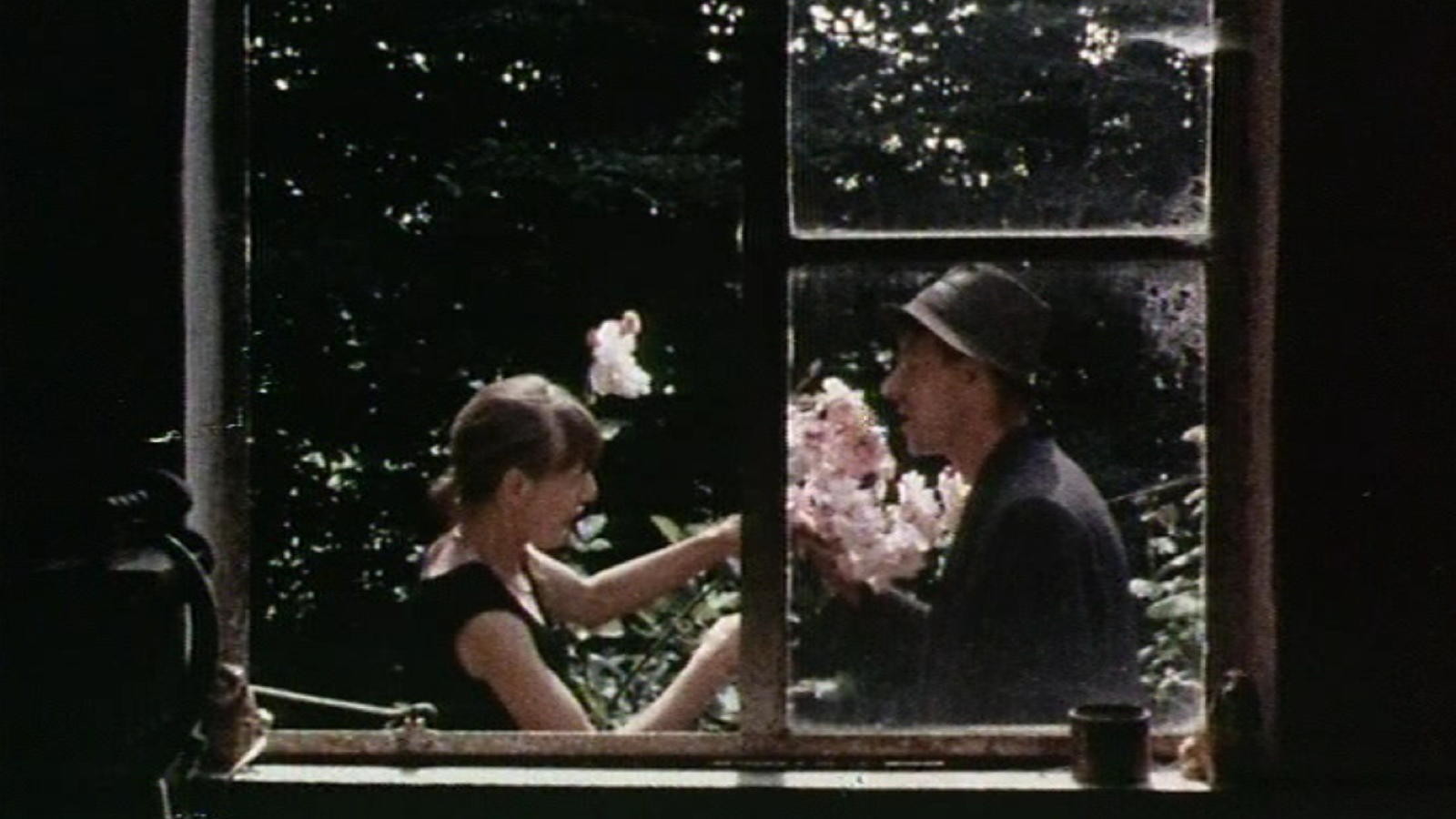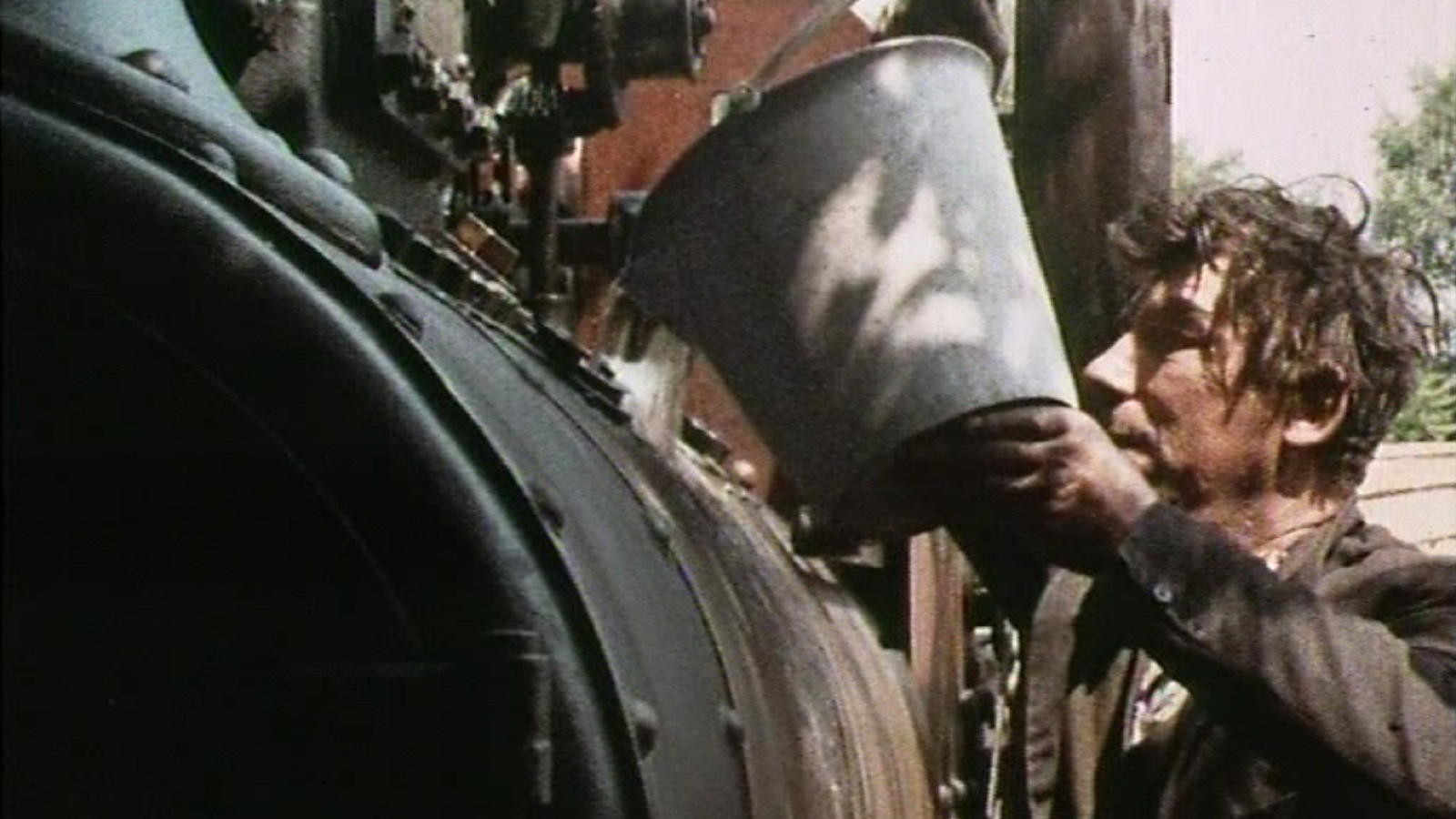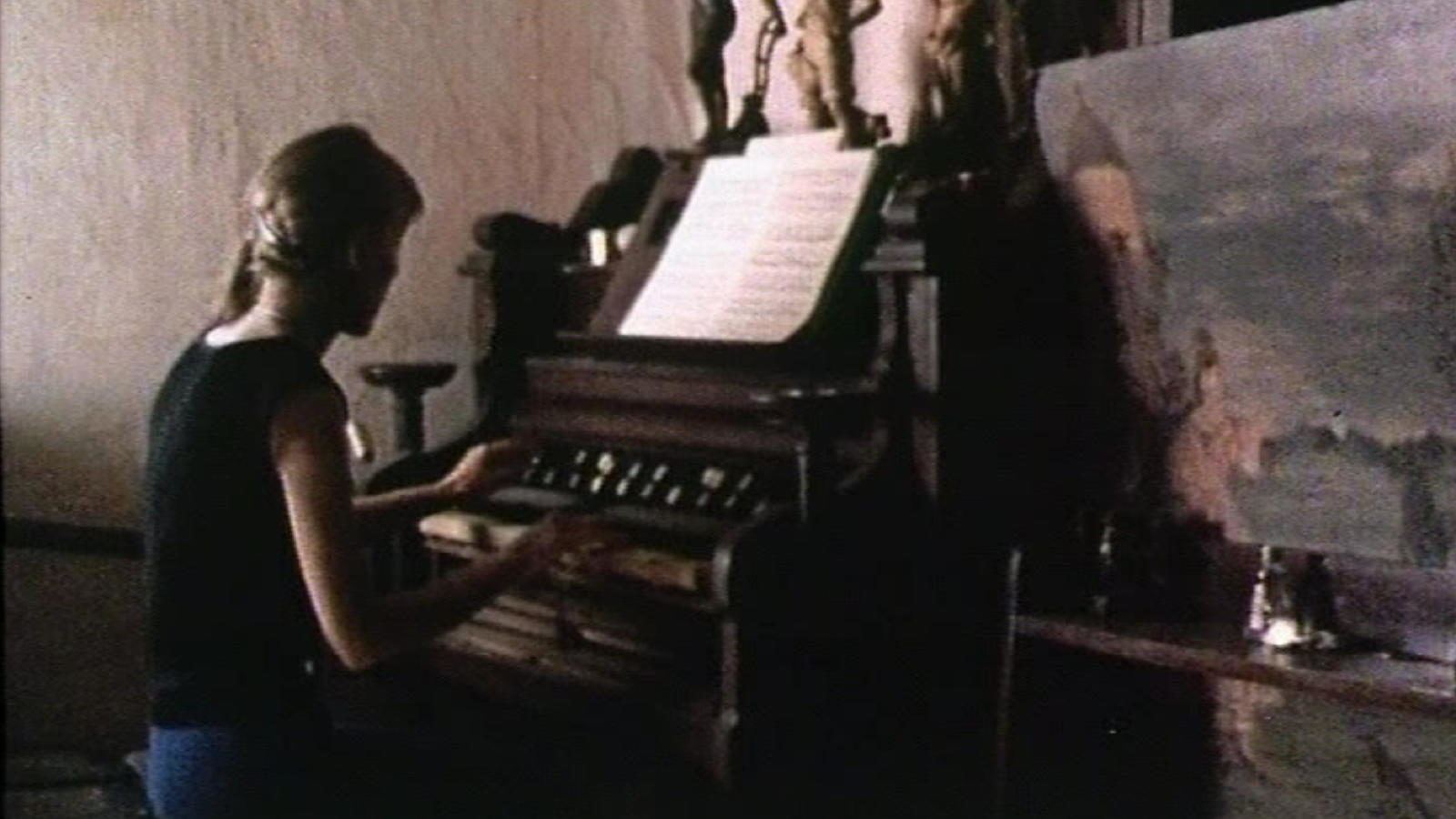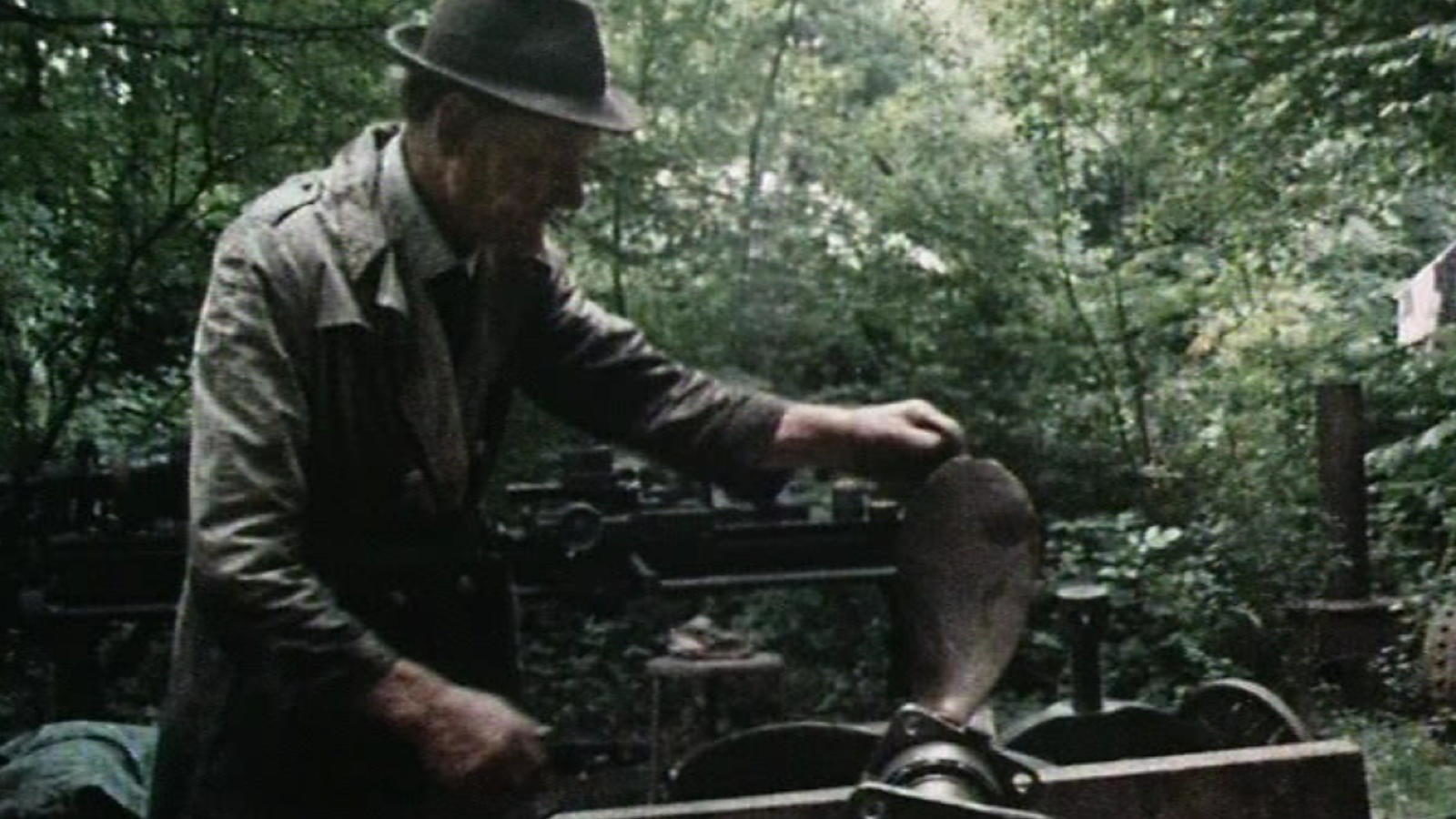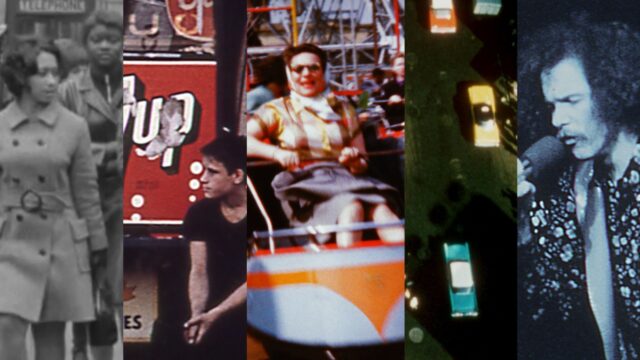The Moon and the Sledgehammer
Philip Trevelyan’s 1971 portrait of a family residing on the outskirts of the 20th century depicts a lifestyle rich in eccentricities, wit, and independence. The Page family lives a simple but self-sufficient existence in their ramshackle house, tucked away within a six-acre woodland property 20 miles south of London. Cut off from society and its influences, the women embroider and garden while the men (wearing suits caked with dirt and grease) tinker, hammer, and braze machines that range from steam engines to a submarine-type boat. This freedom to obsess—over such machines, the moon, or any of their philosophical musings that Trevelyan captures through magnified close-ups—suggests this is a family in control of their lives in more ways than the commuters’ just outside the backcountry.

